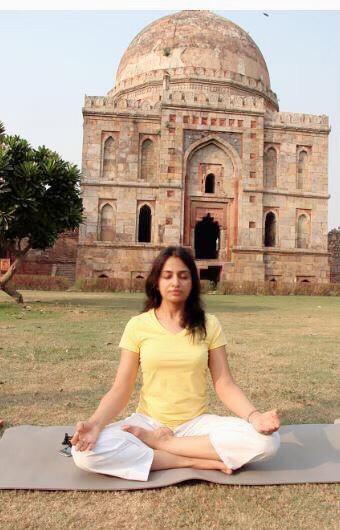
Deep Breathing
Yoga is based on 5 principles. These are listed below: - Proper breathing - Proper exercise - Proper relaxation - Proper diet - Positive thinking and meditation WHAT IS PROPER BREATHING (DEEP BREATHING) Our breath is our life and our life is dependent on our breath. We can survive without food and water for days together but how long can one survive without breath. Despite being aware of the importance of breath, we pay very little attention to our breath. Deep breathing is also called the Yogic breathing or the Diaphragmatic breathing. Before I started my yoga journey, way back in 2007, I remember meeting people with rounded shoulders, hunched back and heaviness in the breathing while talking. I used to wonder why it was so. But after having an understanding of correct breathing, all my questions got an answer. It was due to incorrect breathing. I will explain it here. There are three types of breathing: - Clavicular(shallow): is the most shallow and the worst possible type. The shoulders and collar bones are raised while the abdomen is contracted during inhalation. Maximum effort is made while minimum air is inhaled. Most people breathe shallowly and make little or no use of Diaphragm. They lift the shoulders up and contract the abdomen while inhaling. In this way only the upper part of the lungs is used and only a small amount of oxygen is inhaled resulting in low energy level and low resistance to disease. - Intercostal(middle): is done with rib muscles expanding the ribcage and is the second type of incomplete breathing. - Abdominal(deep): Deep abdominal breathing is the best . It brings air into the lowermost part of the lungs which is the largest part of the lungs. Breathing is slow and deep and diaphragm is used. Diaphragm is a muscle located under the ribcage and which separates the abdomen from the ribcage. A full yogic breathing combines all three. If you notice the shape of the lungs. Lungs are narrow at the top and the shape of the lungs broaden at the base. So, if the breathing is shallow, the breath does not reach the lower part of the lungs which happen to be the largest part of the lungs and as a result, amount of oxygen inhaled is very less. Thus, the mind and body feel tired and low on energy. In the full yogic breath, Inhalation happens in three stages. First, the Diaphragm moves downwards into the abdomen, drawing air into lowest part of the lungs. Then the intercostal muscles expand the ribcage and pull air into the middle part of the lungs. Lastly air comes into the upper part of the chest. Let us practice this in any sitting position. Place your right hand on the upper abdomen, where the diaphragm is located and feel the abdomen expand first, then the ribcage and finally feel the air filling the upper chest. On the exhalation, the abdomen caves in, the diaphragm moves upwards and the breath first leaves the lower lung, then the middle and lastly the top part. BENEFITS OF DEEP BREATHING Breath influences every cell in the body and is intimately linked with the brain. Humans breathe about 15 times per minute. Respiration fuels the burning of oxygen and glucose, producing energy to power every muscular contraction, glandular secretion and mental process. Thus, breathing influences the quality of life. The ancient rishis studied nature in great detail. They noticed that animals with a slow breath rate like elephants and tortoises have a long lifespan whereas those with a fast breathing rate like, birds, rabbits and dogs live for only a few years. Thus, they realized the importance of slow breathing for increasing the human lifespan. Deep breathing stimulates the lymphatic system in the entire body. As a result, our immune system is greatly enhanced. During deep breathing, the abdominal organs and the heart get massaged and stimulated. Hence any abnormality in the internal organs is healed with deep breathing. A slow breathing rate keeps the heart stronger and better nourished and contributes to a longer life. Mindful deep breathing, with emphasis on exhalation, aids relaxation. Deep breathing increases the absorption of energy into the body, thus brings health and vitality to the mind and the body and promotes good health. To sum up, Deep breathing relieves insomnia, lowers the blood pressure and thus the heart rate, reduces stress and calms the mind. It steadies the emotions, revitalizes the body, and to an extent keeps the body disease free.
